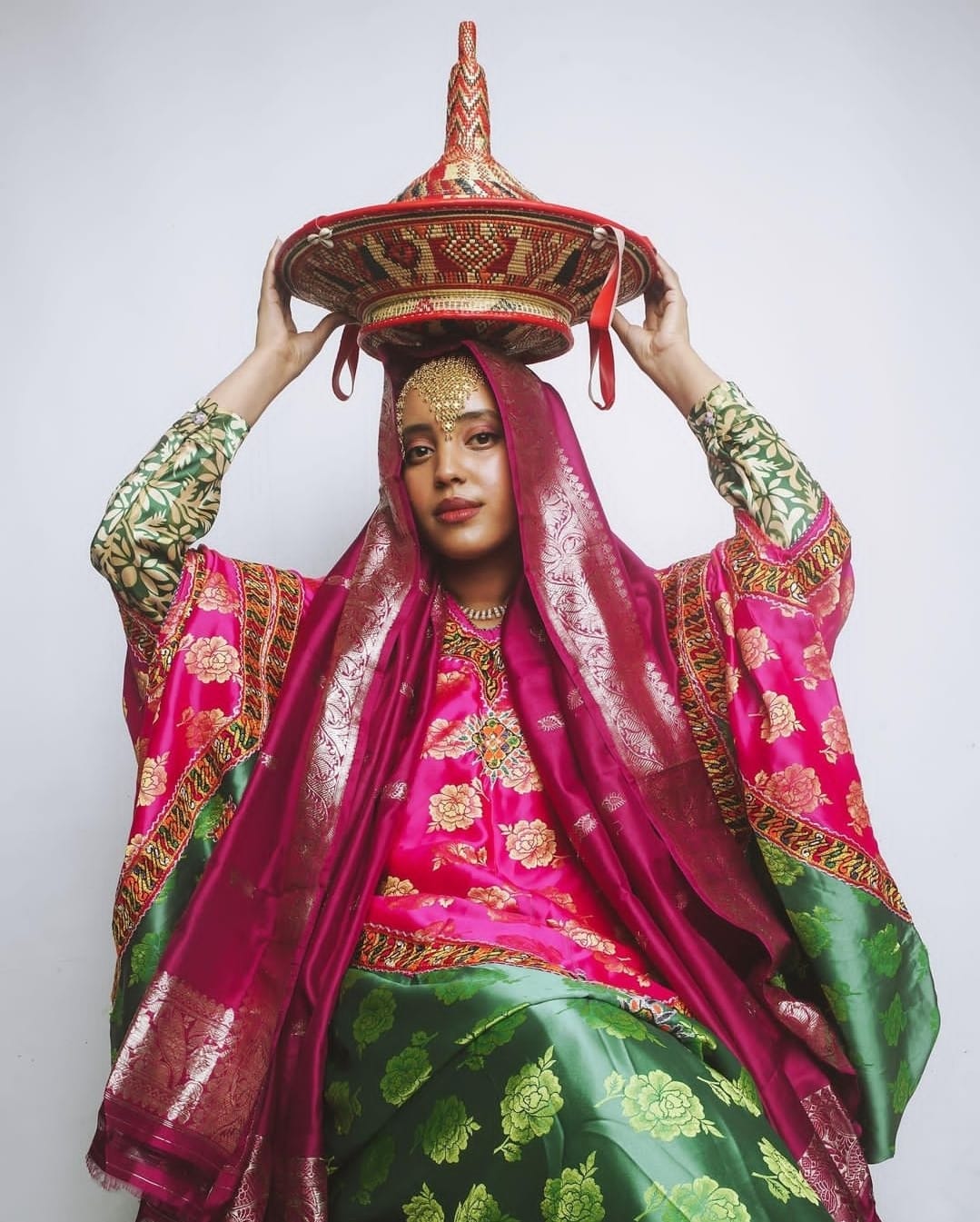
Women’s garments in Harar are of a simple cut. Ge iraz refers to the traditional dress worn over an ordinary one when going out. Since most often such a dress is made of black material, it is also called tay iraz (‘black dress’). Such a dress may be about two metres long and is then tied up with a shawl as a belt in such a way that the upper part covers like a blouse part of the lower one. The upper part of the gown, triangular- shaped, is of a material dyed in a different colour. This upper part ends in the apex of the triangle at the lower part of the gown, while the basis of the triangle is at the top. It is often made in such a way that it can be worn doubleface: that is a richer and more colourful side for festive occasions, a simpler one for daily use. Sleeves and the upper part are cut and sewn in Kimono style. The openings for the sleeves, shoulder parts, the V-shaped neck-opening and the apex of the triangle are decorated with rich and delicate embroidery in geometric and floral designs. Such dresses are often part of an engagement or a pre-wedding gift the bridegroom’s family give to a bride.

Women’s trousers with tight, elaborately handembroidered leggings made of silk, velvet or rayon are called ge gannafi. Since the skirts are shorter, the leggings can be seen. The custom of wearing such trousers began after the Egyptian occupation of the 1880s. Burton neither mentions nor shows in his sketches such leggings. Men have largely adopted Western-type clothing. They used to wear a type of sarong of imported material and turbans or caps handcrocheted by Harari ladies. Occasionally an Arabian-type costume of white trousers and a long white shirt, both of factory-made cotton, are worn. Imported Indian machine-embroidered shawls of artificial wool are worn folded over the shoulder. For a bridegroom such a shawl is de rigueur.
Source:
Encyclopaedia





